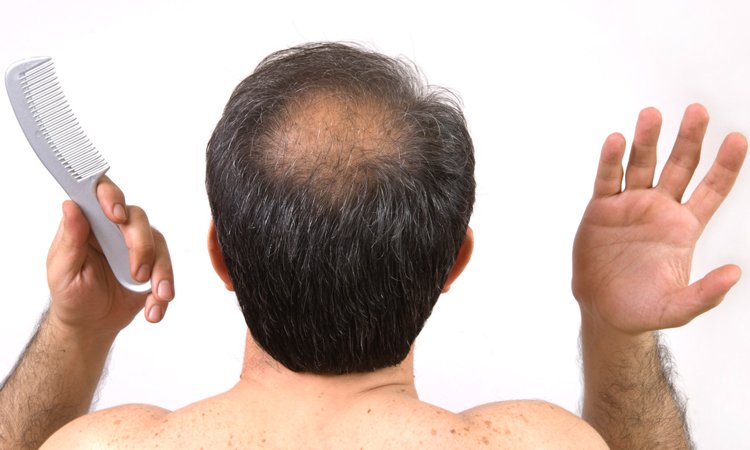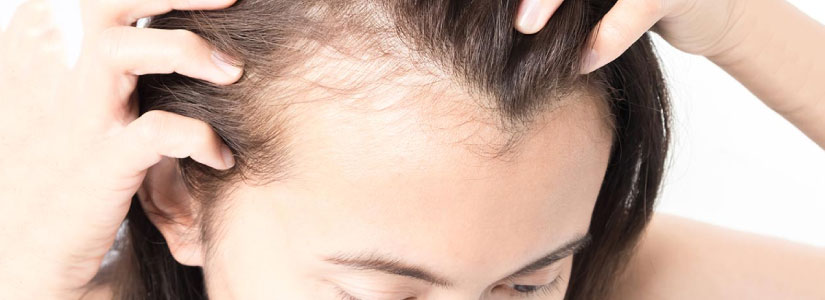Pros and Cons of Medication Used for Male Pattern Baldness
May 2, 2016

Male pattern baldness, also known as androgenic alopecia, is one of the most common causes of hair loss in men, affecting up to 70 percent of men at some stage in their lifetimes. Despite being quite common, it is very much manageable and in some cases reversible condition as well. If you are also shedding your hair for no apparent reason, go get some blood tests done, your hormones may be the real culprits.
Causes of Male Pattern Baldness:
Male pattern baldness or androgenic alopecia is related to the genes as well as male sex hormone testosterone. If you see lots of bald people in your family, no matter maternal or paternal, there are chances that you may also go bald in your middle or old age. This type of hair thinning is named so because it follows a distinct pattern, characterized by receding hairline and a thinning head crown. Dihydrotestosterone (DHT) is a male sex hormone that causes the hair follicles to shrink over time and there comes a stage where the follicle fails to grow new hair. Nevertheless, the follicle remains alive, indicating that hair regrowth from that miniaturized follicle is still possible.
Diagnosis of Male Pattern Baldness:
While the pattern of hair loss is enough to tell an experienced surgeon that his or her patient is suffering from androgenic alopecia, there are some blood tests and other procedures like skin biopsy that can further confirm the diagnosis.
Treatment for Male Pattern Baldness:
If you are comfortable with your appearance, there is no need to undergo any treatment. But this is very rare. For most of the individuals, losing their locks can be embarrassing and distressing. If a receding hairline and a thinning crown is bothering you, see some physician to get it fixed. Listed below are some non-invasive, painless solutions for fixing hair loss.
Cosmetic Camouflages:
Wigs, toupees, hairpieces, extensions, and even change of hairstyle can all help camouflage bald spots or areas of hair thinning. These products comprise the least expensive and probably the easiest and safest solution for male pattern baldness.
Topical Medications:
If you don’t like the idea of wearing a wig or a hairpiece 24/7, you can always opt for medications to treat androgenic alopecia. Minoxidil is an over the counter application that has shown significant results in patients whose hair loss was in initial stages. This solution is directly applied to the affected areas of the scalp only, where it works by stimulating the dormant hair follicles. It significantly slows down hair loss for most of the men, and some also grow new hair. It should be used regularly for 4 to 6 months to see the best results.
Oral Medications:
There are different oral medications as well to help control hair loss from inside out. One prescription pill that is most commonly used for treating male pattern baldness is Finasteride. This medication works by interfering with the production of Dihydrotestosterone, a male sex hormone linked to male pattern baldness. It is more effective than the topical application Minoxidil as it triggers hair regrowth in up to 50% cases.
Hair Transplant Surgery:
If your hair loss has matured and you are seeking treatment for permanently regrowing hair, getting a hair transplant surgery may be the right choice for you. The surgery involves removing hair with roots from a baldness resistant area like the back or sides of the scalp and transplanting them into the areas affected by hair loss.
Free Consultation
If you are seeking hair transplant in Dubai, visit Hair Transplant Dubai Clinic now and get the surgery done by our highly skilled and experienced surgeons. We also offer free online consultations for our clients from all over the world.
Dr. Cagatay Sezgin is a celebrity hair transplant surgeon with over 20 years of experience in hair transplantation and restoration. He is the First Turkish Board Surgeon to become a member of the International Society of Hair Restoration Surgery (ISHRS) and the Asian Association of Hair Transplant Surgeons (AAHRS). Moreover, he has the honor of becoming the first hair transplant surgeon in the world to perform hair, eyebrow, and beard transplantation all in one case and that too in a single session.

June 20, 2018

November 20, 2018